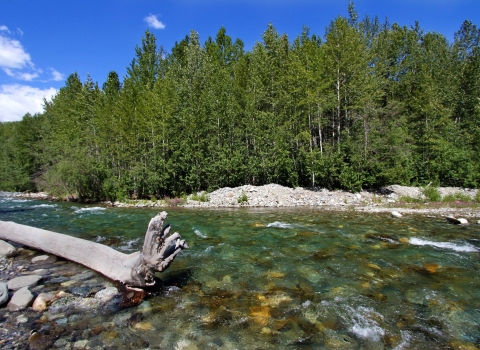DENVER – Today the U. S. Fish and Wildlife Service announced that Denver’s Rocky Mountain Arsenal National Wildlife Refuge will be awarded $1 million in additional annual funding to expand their Urban Wildlife Conservation Program. With this funding, the Refuge will be able to better support local communities in the metro Denver area by offering a safe outdoor place for the community and visitors to enjoy recreation in their nearby nature. The Refuge will also be able to improve infrastructure, provide more environmental education opportunities, and support community partnerships.
“We are thrilled to be able to invest additional resources in providing opportunities for diverse local communities to use and enjoy the Refuge,” FWS Regional Director Noreen Walsh said. “Our vision is for the Rocky Mountain Arsenal National Wildlife Refuge to be a place where all are welcome, and where visitors can enjoy access to the natural world and learn about our native wildlife. We are especially excited to be able to invest these new resources in connecting to and partnering with our neighbors in this urban metropolitan area.”
Established as a national wildlife refuge national wildlife refuge
A national wildlife refuge is typically a contiguous area of land and water managed by the U.S. Fish and Wildlife Service for the conservation and, where appropriate, restoration of fish, wildlife and plant resources and their habitats for the benefit of present and future generations of Americans.
Learn more about national wildlife refuge in 1992, the prairie and lakes of Rocky Mountain Arsenal attract raptors, migrating songbirds, wintering ducks, and geese. The Refuge also provides habitat for a variety of mammals including bison, coyotes, deer, and one of North America’s most endangered mammals, the black-footed ferret. What makes this public land truly unique is its location in the Denver metro area. At 15,000 acres, Rocky Mountain Arsenal National Wildlife Refuge is one of the largest urban refuges in the country. It is a place where wildlife thrives and people can reconnect with nature. Visitor amenities include more than 20 miles of hiking trails, an 11-mile wildlife drive, seasonal fishing, a visitor center and much more.
Over the last eight years, the Refuge, and the two other refuges in the Denver metro area, Two Ponds and Rocky Flats National Wildlife Refuges, have become leading destinations for Denver’s fast growing diverse urban population. Latinx and African American residents make up 75% of the communities surrounding the refuge. The Service has been engaging with the local community to understand their vision for the refuge. Visitor Services Manager Sarah Metzer reflected, “Conservation success stems from our understanding of the communities we serve, and we are committed to listening, growing, and continually improving from community feedback.”
During this first year of increased funding, the staff will invest in infrastructure projects that improve accessibility and connect refuge lands to local communities through pedestrian pathways and nature play areas at those entries. The Service plans to build additional capacity through staffing, focused on recruiting Spanish-speaking interpreters to help the Service better connect with the Spanish-speaking community, and expanding youth hiring programs to offer opportunities for local youth to connect to conservation. This funding is a part of the Service’s national Urban Wildlife Conservation Program that facilitates long-term, place-based collaborative partnerships engaging communities in conservation on and off Service lands. Biden Administration priorities of equitable conservation, diversity and inclusion, climate resilience, and building back better are all supported by this opportunity at Rocky Mountain Arsenal National Wildlife Refuge.
The mission of the U.S. Fish and Wildlife Service is working with others to conserve, protect, and enhance fish, wildlife, plants, and their habitats for the continuing benefit of the American people. For more information on our work and the people who make it happen in the West, visit our website, or connect with us through any of these social media channels: Facebook, Twitter, Flickr, YouTube, and Instagram.


